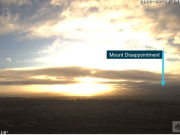The U.S. National Weather Service (NWS) should provide its aviation weather forecasters with formal training on forecasting low-level turbulence, the U.S. National Transportation Safety Board (NTSB) said in a safety recommendation report that cites the fatal 2017 crash of a Pilatus PC-12.
The report, adopted by the NTSB earlier this month and announced Thursday, said that the NTSB’s ongoing investigation of the accident raised concerns that, although low-level turbulence may have existed in the accident area around the time of the accident, “there were no airmen’s meteorological information (AIRMET) advisories active for turbulence below 10,000 ft at the accident location at the accident time.”
The report added that NWS Aviation Weather Center (AWC) forecasters “may have varying professional criteria for issuing advisories for turbulence (like AIRMETs) when convective significant meteorological information (SIGMET) advisories are active in the same region, and low-level turbulence is not adequately covered in formal training for AWC or other NWS aviation forecasters.”
A companion recommendation said the NWS should revise instructions to “include guidance on the issuance of airmen’s meteorological information advisories and other products that advise of nonconvective turbulence hazards when convective significant meteorological information advisories are active, or may be issued, in the same region.”
The accident cited in the NTSB report occurred shortly before midnight April 28, 2017, after the air ambulance flight took off from Rick Husband Amarillo International Airport in Texas. The airplane, on an instrument flight rules flight plan to Clovis, New Mexico, was cleared for takeoff at 2344 local time. The pilot reported to the Amarillo control tower at 2347, and the transponder signal was lost at 2348, shortly before a fireball was seen south of the airport.
The pilot and two crewmembers were killed and the airplane was destroyed in the crash.
The NTSB said that low-level turbulence has not been identified as a factor or cause of the accident, but “the safety risks associated with significant turbulence encounters are well known. … Therefore, it is important that issuance of turbulence-related weather products directed to pilots be consistent and that these products address the turbulence potential at all operating altitudes.”



